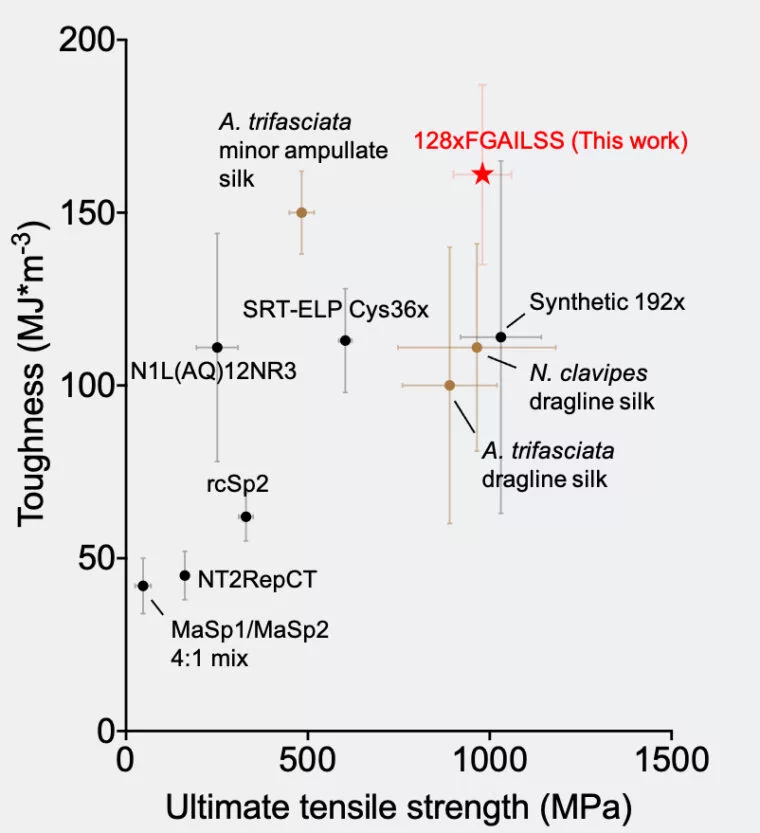Spider silk is one of nature’s most impressive materials, exhibiting impressive strength and toughness. Now, researchers at Washington University in St. Louis claim to have created an artificial version that can outperform some natural spider silks.
This isn’t the first rodeo for this research team – back in 2018 they developed a synthetic spider silk that was about on par with the real thing, in terms of tensile strength, extensibility and toughness. To do so, they spliced silk-producing genes into bacteria, and tweaked them so that proteins in the silk would fuse together to make a stronger, tougher material.
For the new study, the team built on this prior work to not just match natural spider silk but to surpass it. The key component is beta-nanocrystals, which boost the material’s strength but are hard to reproduce synthetically.
“Spiders have figured out how to spin fibers with a desirable amount of nanocrystals,” says Fuzhong Zhang, lead researcher on the study. “But when humans use artificial spinning processes, the amount of nanocrystals in a synthetic silk fiber is often lower than its natural counterpart.”
So the researchers once again rolled up their sleeves and tinkered with the protein arrangements in the silk. This time they added new amyloid sequences that tend to produce more beta-nanocrystals, while also using fewer repetitive amino acid sequences, which makes it easier for bacteria to produce them.
The end result was a hybrid polymeric amyloid protein containing 128 repeating units. That’s fewer than the 192 in the team’s previous work, but the beta-nanocrystals more than make up for the loss in strength that that might bring.

In tests, the new synthetic silk showed an average ultimate tensile strength of around 1 Gigapascal (GPa), and an average toughness of around 161 Megajoules per m3. That combination outperforms most synthetic silks, as well as some natural ones, including the dragline silks of elaborate web-spinners like the golden silk spider and the banded garden spider.
And the team says that there’s still plenty of room for improvement. They only worked with three amyloid sequences, meaning better properties could be hiding among the thousands of others waiting to be explored.
The research was published in the journal ACS Nano.





